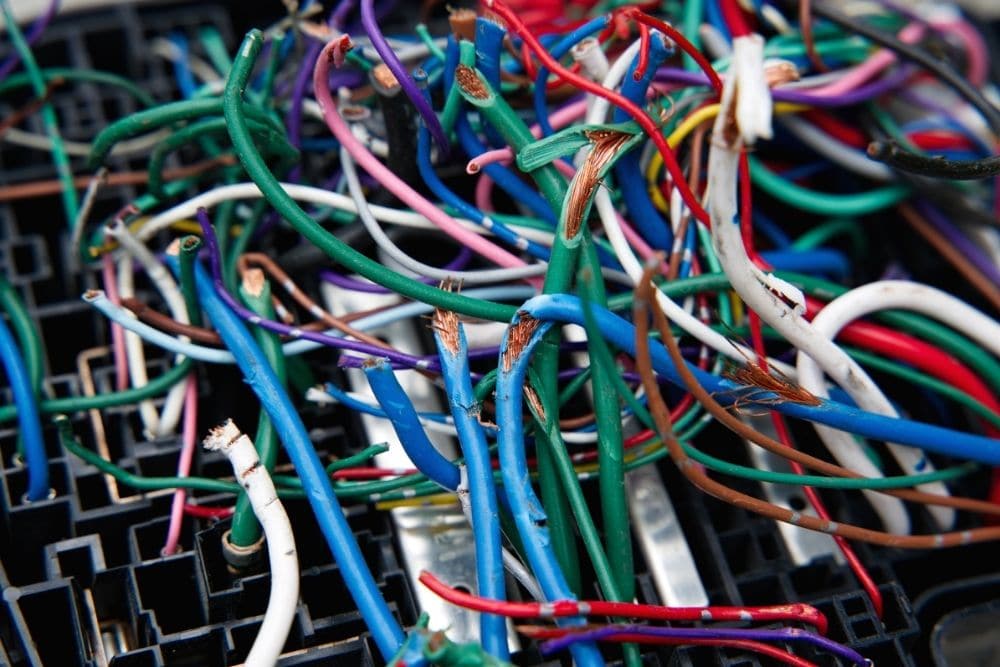Losing power to your trolling motor can be confusing and even frightening.
Say you’re out in the middle of a large lake or several miles off-shore in the ocean, enjoying a day of fishing or exploring, when suddenly, your motor dies.
Even if you have a spare set of oars on board, you may be dreading the effort it will take to paddle back to shore.
What could have caused the power loss? And is there anything you can do to fix the problem?
Keep reading!
In this article, we’ll troubleshoot issues that could cause no power to your trolling motor and discuss how to fix each issue.
Table of Contents
What Causes Trolling Motor Power Loss? Plus How to Fix the Problem
Whether your trolling motor lost power in the middle of the lake, it won’t work after several months in storage, or you just bought it and can’t get it to power up, trolling motor power issues can be a great source of concern for avid boaters and anglers.
Fortunately, a lack of power doesn’t mean your trolling motor is beyond help.
In fact, there are several problems that may have caused the power loss, including:
- A dead battery
- A loose connection
- A loose part interfering with the connection
- Electrical problems
- Propeller problems
- Corrosion
Many of these problems are simple enough for you to fix yourself. Let’s take a closer look at each issue and discuss how to fix it. With any luck, your motor will be back up and running in no time!
1. Dead Battery
If your trolling motor suddenly shuts off, or won’t power up in the first place, the first thing you should check is the battery. It may have gone bad in some way, but more likely, it simply needs charging.
If you’ve been out on the water for the better part of a day, and especially if the trolling motor has been running constantly, it’s likely that you drained the battery. Check your motor’s battery readout levels. If they show low battery charge, this is your most likely problem.
If the battery readout is dead, or you don’t have one on your trolling motor, the only way to check the battery charge is with a battery tester. If you have one on board, use it. If not, check for other problems with the motor, as discussed below.
If you are able to determine that a dead battery is the problem, you won’t be able to fix this until you’re back on shore. If you have a spare battery with you, you can hook it up to the trolling motor and see if that corrects the problem.
Otherwise, you’ll be paddling back to shore.
Once you’re back home, put the dead battery on the charger. If it charges normally and restores power to your motor once it’s fully charged, the problem is solved.
If the battery won’t hold a charge or dies sooner than you expected after being charged, you may have an old or damaged battery. You could have it inspected by a professional, or you could simply buy a new battery.
2. Loose Connection

A loose or broken wire is one of the most common problems if you have no power to your trolling motor. Often, the vibrations that come with repeated uses will cause wires or other parts to shake loose, killing the electrical circuit.
To check for loose connections, open up the motorhead by removing the screws that hold the cover in place. You may also want to check the connections on the control end as well as the cords connecting the motor to the battery.
Do a visual scan to see if anything looks out of place–any wires ends that aren’t attached to anything, any wires that appear broken, etc.
If it appears that something is disconnected, you can simply reconnect it. If you’re not sure which connections belong where, or if there are several wires out of place, consult your owner’s manual before attempting to fix the connections.
You can also check out this video to help you understand more about trolling motor wiring.
If one of the wires is damaged, cut, or melted, that wire will need to be replaced. Depending on the type of trolling motor you have, you may be able to buy a replacement wire and install it yourself.
In most cases, though, your best bet will be to get the wire professionally replaced.
3. Loose Part
If all the wires are properly connected, there are other internal components of the motor that may shake loose with repeated uses. Screws, nuts, washers, gears, and gaskets may all become disconnected inside the motorhead, which may cause power loss.
If you come across loose parts while inspecting the inside of your motorhead, carefully remove them. Attempt to identify them, using your owner’s manual if necessary.
Once you know what the part is and where it goes inside the motor, secure it in the proper spot. This may be as simple as tightening a couple of screws or plates into place, as shown in this video.
4. Electrical Problems
Even if the battery and wires all appear properly connected, charged, and undamaged, your motor may still be experiencing an electrical problem.
The most likely issue, especially if it suddenly stops working while you’re out on the water, is that the motor became overloaded and blew a circuit breaker. This may happen if the battery is stressed beyond capacity by rough waters or stuff getting tangled in the propellers.
If you suspect a circuit breaker problem, do a visual inspection of the breaker as demonstrated in your owner’s manual or in the video below. It’s also important to try and determine what tripped the breaker in the first place.
We’ll talk more about propeller problems in the next section. If the motor has simply become overloaded, it might be best to give it a rest for a while after resetting the breaker. If possible, turn the speed setting down as well.
Push in the breaker button to reset the circuit breaker. If it continues to go out frequently, you may have a short in one of the wires. Unless you can find which wire is faulty, you’ll probably need to take it into a repair shop to get the motor fixed.
5. Propeller Problems

If the fishing line or water plants get wrapped around the propeller, they may overstress the battery and cause a short. Tangled-up props may cause other problems too, such as causing internal wires to overheat and melt. If your motor stops working but everything looks fine with the connections and circuits, or if you find some melted wires, check the prop. If you find anything tangled in the props or anywhere around the motor head, carefully remove it by cutting away the debris.
Check out this video for a demonstration of how to clean your trolling motor prop.
If there is no other damage visible, reset the circuit breaker and try powering up the motor. The motor may start working again without any further problems.
If the motor still doesn’t start, check for further damage.
If the wires are damaged or melted, don’t try to power up the motor even after removing any debris tangled in the propellers. Damaged wires will need to be replaced before you can use the motor again.
6. Corrosion

Most trolling motors are made with protective outer covers to keep water and dust from getting inside. That said, if your trolling motor has taken a lot of use and abuse over the years, it may have become weathered or damaged.
Any wearing or small cracks in the outer cover may lead to the internal parts becoming corroded. Rust can build up on screws, gears, and other parts, causing them to become brittle and preventing them from working properly.
This problem may present itself if you recently bought a used trolling motor and can’t get it to start. It may also be to blame if you can’t get your existing motor to start after it’s been left out in the weather or stored without proper cleaning and drying first.
When checking the internal components of the motor, look for any sign of rust. You may also want to check the battery terminals and connecting cords as well.
Any part that is corroded will likely need to be replaced. You may be able to replace the part yourself, depending on the part and your skill with handling DIY repairs. Otherwise, you may want to take it to your local repair shop to have it professionally serviced.
Conclusion
And there you have it!
If, after reading this guide, you’re still not sure why your trolling motor has lost power, this troubleshooting video may be able to help.
Losing power to your trolling motor can be a frustrating experience, but with a little time and patience, you may be able to solve and fix the problem yourself.
Follow the tips in this guide and the embedded videos. With any luck, you should be back on the water in no time!

Sarah Hood has been writing for Anchor Travel since 2021. When she’s not writing, she enjoys cooking, singing, and spending time in the great outdoors.



